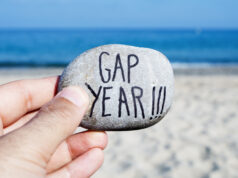
If you’re carrying debt on more than one credit card or loan, you’re not alone.
Americans with credit cards average $5,315 in debt, according to a 2020 Experian report, and that doesn’t include additional debts, such as mortgages, car loans and student debt. A lot of consumers are trying to pay off multiple credit accounts simultaneously.
With all these outstanding balances, which debt should you pay off first? While you should always make at least the minimum monthly payment on every debt you owe, it can be hard to know how to prioritize any extra debt repayment dollars each month.
While paying off your highest-interest debt first is a common strategy, there are benefits to tackling your smallest debt first, regardless of interest, and working your way up to your largest debt. Let’s look at how to choose which loan to pay off first, as well as the pros and cons of various debt repayment scenarios.
Option 1: Pay off the highest-interest debt first
There’s a good reason to pay off your highest interest debt first — it’s the debt that’s charging you the most interest. Credit cards with higher-than-average APRs can be especially hard to pay off, and anyone with a student loan or mortgage knows the frustration of making monthly payments that only go toward the interest, not the principal.
If you want to get rid of that high-interest debt as quickly as possible, start focusing your debt repayment efforts on your highest-interest debt first. This is commonly referred to as the avalanche method. Keep making the minimum monthly payments on all of your credit cards and loans, but put every extra penny you can toward the card or loan with the highest interest rate. If you need help, here’s a list of five steps to help you pay down your debt as quickly as possible.
While focusing on your highest-interest debt first is a smart move, it isn’t necessarily the best option for everyone. If you’re making monthly payments on many debts, for example, you might not have a lot of extra money to put toward your highest-interest debt. The avalanche method might also be discouraging if you have a large debt, since paying it off could feel impossible.
Option 2: Pay off the smallest debt first
While some people choose to address their debt based on interest rate, others pay off their smallest debt first and work their way up to the largest one. This debt repayment method, popularized by financial guru Dave Ramsey, is called the debt snowball because it starts small and grows over time.
The snowball method works because paying off a debt in full incentivizes you to keep working toward your goal — and as you pay off your smaller debts one by one, you’ll have more money to put toward your larger debts. You might end up paying more in interest than you would have paid if you tackled your highest-interest debt first, but the psychological benefits of getting those smaller debts paid off as quickly as possible can be very rewarding.
To get started with your debt snowball, list all of your current debts — and their current balances — from low to high. Continue to make the minimum monthly payment on all of your debts while putting as much extra money as possible toward your smallest debt. Once that debt is paid off, put your extra money toward your next-smallest debt, and so on. The bigger you build your debt snowball, the closer you’ll get to debt freedom.
Option 3: Why you should focus on your credit score
To understand how credit scores impact your life, imagine your credit rating as a sort of financial blood pressure. It requires monitoring, especially if finances appear incompatible with your lifestyle. Your credit score can help lenders understand how on top of finances you may or may not be. It’s affected by how much debt you have, the number of open credit lines in use and your payment history.
For larger purchases like a new home or car, your credit score and credit use will need to be on the favorable side. Your credit utilization — the amount of your available credit compared to what you’re using — should be under 30 percent, and your accounts should be current. Any delinquency in payments will make a mortgage loan officer, or any lender, reconsider whether to offer you a loan.
If you have a polished credit image, banks and other financial institutions will likely consider you less of a risk as a borrower. You’ll also have more opportunities to secure lower APRs and zero-down deposits. Your credit cards could receive increases in spending limits, and your financial institution may extend handsome offers to keep your responsible business going.
Focusing on your credit score could require making lifestyle changes to start chipping away at debt. You may see changing your habits — like cutting out daily takeout lunches and impulsive shopping — as a huge hurdle. Since a chunk of your earnings will have to go toward your debts, you could lose motivation. However, giving up some comforts can decrease your debt and improve your credit score.
Option 4: Use a balanced method
Attacking your largest debt may feel like too large of a financial feat. Smaller debts can wait when compared to more pressing circumstances, like debts that have fallen into collections. Debts that get you tax deductions for the interest you pay — like a student loan or a home equity loan used to “buy, build or substantially improve” your home — might also fall lower in the order of importance.
What can you do in these scenarios? Take a balanced approach that’s exclusively your own. You can incorporate any of the three debt repayment options we mentioned, in whichever order or manner you desire. For instance, you could eliminate a debt that’s in collections before paying your credit card down, making only minimum payments on your other accounts in the meantime.
Consider debt consolidation
If you want to consolidate your debt into a single monthly payment, you have a few options. You could transfer your existing credit card balances onto a balance transfer credit card, many of which come with lengthy 0 percent introductory APR periods. The top balance transfer credit cards offer between 15 and 21 months of 0 percent APR on balance transfers, giving you ample time to start paying off your debt without paying interest on your transferred balance.
You could also take out a personal loan and use that money to pay off high interest debt. Yes, you’ll still need to pay off your personal loan, but if you can find one that offers considerably lower interest rates than what you’re currently paying, it might be a way to lower the overall cost of your debt repayment process. Use Bankrate’s debt consolidation calculator to figure out how much you could save by taking out a personal loan.
Lastly, you might want to consider consolidating your debts through a home equity loan or home equity line of credit. Bankrate’s home equity calculators can help you determine whether tapping your home’s equity in order to pay off your debts would save you money in the long run. Remember, if you fall behind on your mortgage payments, you run the risk of foreclosure — so think carefully before taking out a second mortgage to pay off other debts.












